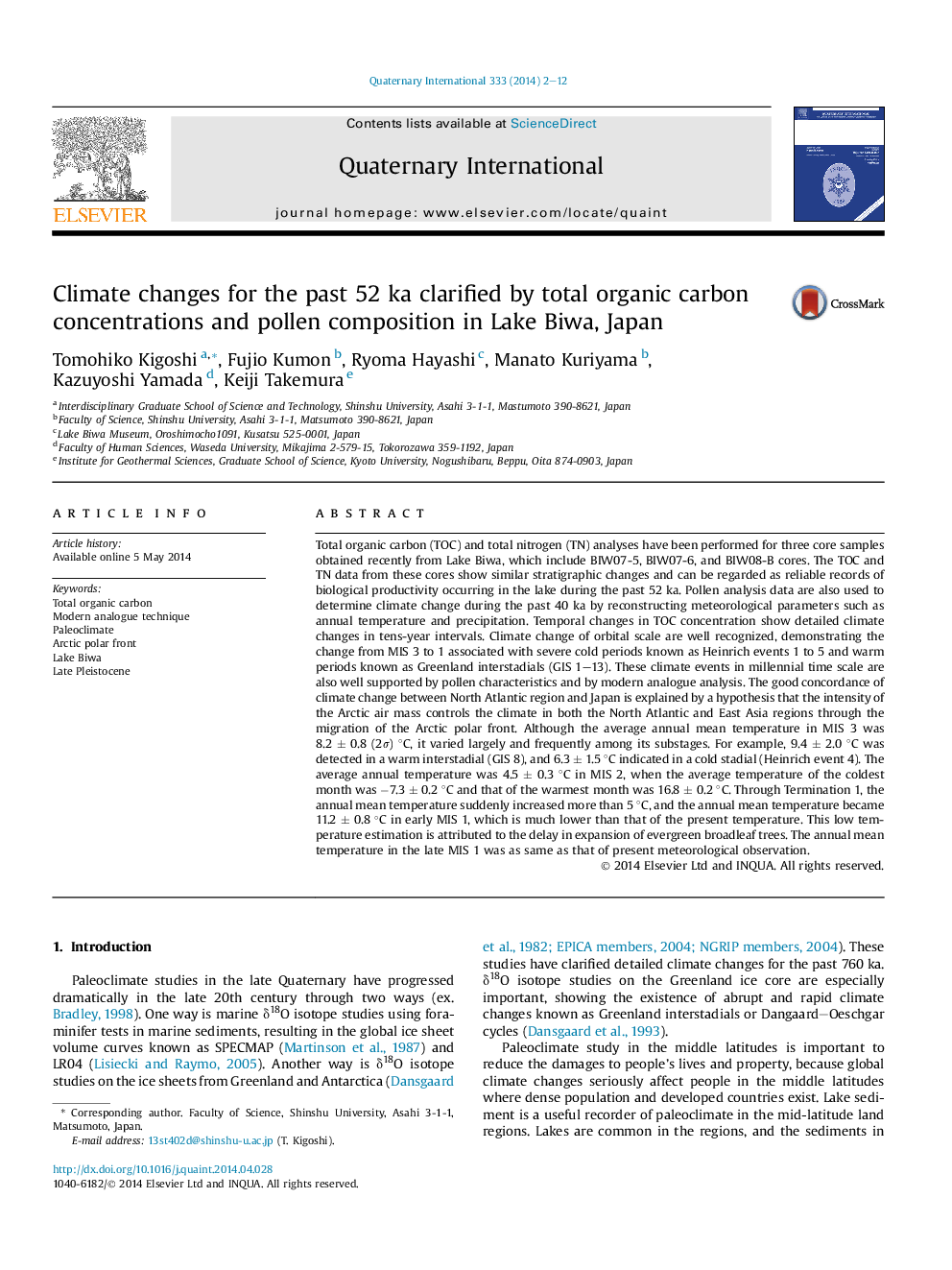| کد مقاله | کد نشریه | سال انتشار | مقاله انگلیسی | نسخه تمام متن |
|---|---|---|---|---|
| 1041580 | 1484161 | 2014 | 11 صفحه PDF | دانلود رایگان |

Total organic carbon (TOC) and total nitrogen (TN) analyses have been performed for three core samples obtained recently from Lake Biwa, which include BIW07-5, BIW07-6, and BIW08-B cores. The TOC and TN data from these cores show similar stratigraphic changes and can be regarded as reliable records of biological productivity occurring in the lake during the past 52 ka. Pollen analysis data are also used to determine climate change during the past 40 ka by reconstructing meteorological parameters such as annual temperature and precipitation. Temporal changes in TOC concentration show detailed climate changes in tens-year intervals. Climate change of orbital scale are well recognized, demonstrating the change from MIS 3 to 1 associated with severe cold periods known as Heinrich events 1 to 5 and warm periods known as Greenland interstadials (GIS 1–13). These climate events in millennial time scale are also well supported by pollen characteristics and by modern analogue analysis. The good concordance of climate change between North Atlantic region and Japan is explained by a hypothesis that the intensity of the Arctic air mass controls the climate in both the North Atlantic and East Asia regions through the migration of the Arctic polar front. Although the average annual mean temperature in MIS 3 was 8.2 ± 0.8 (2σ) °C, it varied largely and frequently among its substages. For example, 9.4 ± 2.0 °C was detected in a warm interstadial (GIS 8), and 6.3 ± 1.5 °C indicated in a cold stadial (Heinrich event 4). The average annual temperature was 4.5 ± 0.3 °C in MIS 2, when the average temperature of the coldest month was −7.3 ± 0.2 °C and that of the warmest month was 16.8 ± 0.2 °C. Through Termination 1, the annual mean temperature suddenly increased more than 5 °C, and the annual mean temperature became 11.2 ± 0.8 °C in early MIS 1, which is much lower than that of the present temperature. This low temperature estimation is attributed to the delay in expansion of evergreen broadleaf trees. The annual mean temperature in the late MIS 1 was as same as that of present meteorological observation.
Journal: Quaternary International - Volume 333, 30 May 2014, Pages 2–12